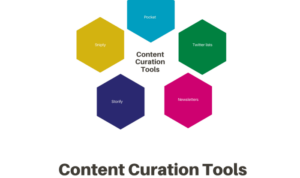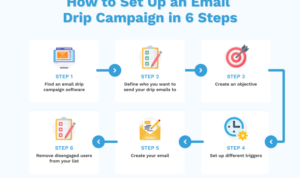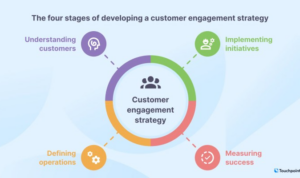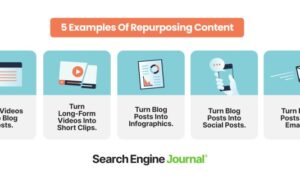Creating Buyer Personas is like putting together a puzzle to know who you’re selling to. It’s all about getting inside the heads of your customers and tailoring your marketing to what they want. Get ready to dive into the world of buyer personas!
Introduction to Buyer Personas: Creating Buyer Personas

Buyer personas are fictional representations of your ideal customers based on market research and real data about your existing customers. They help businesses understand their target audience better by identifying key characteristics, behaviors, and goals of different customer segments.
Key Components of a Buyer Persona
When creating buyer personas, it’s important to consider various components that make up a comprehensive profile of your target customers. These components include:
- Demographics: This includes details such as age, gender, income, education level, and occupation.
- Behaviors: Understanding how your customers act, what they value, and how they make purchasing decisions is crucial for effective marketing strategies.
- Goals and Motivations: Knowing the goals and motivations of your target audience can help tailor your products or services to meet their needs and preferences.
- Challenges and Pain Points: Identifying the challenges and pain points your customers face can help you address their problems and provide solutions that resonate with them.
Research for Creating Buyer Personas
To create effective buyer personas, it is crucial to conduct thorough research to gather the necessary data. This research will help you understand your target audience better and tailor your marketing strategies to meet their specific needs and preferences.
Methods for Conducting Research
When conducting research for creating buyer personas, there are several methods you can use to gather valuable data:
- Surveys: Send out surveys to your existing customers or target audience to collect information about their demographics, preferences, and buying behaviors.
- Interviews: Conduct one-on-one interviews with customers to gain deeper insights into their motivations, pain points, and decision-making processes.
- Analytics: Utilize website analytics and social media insights to track user behavior, engagement metrics, and preferences.
Importance of Using Quantitative and Qualitative Data
It is essential to use both quantitative and qualitative data in the research process to create well-rounded buyer personas:
- Quantitative data (such as demographics, purchase history, and website traffic) provides statistical insights and helps identify trends and patterns.
- Qualitative data (gathered from interviews, surveys, and customer feedback) offers deeper insights into customer motivations, preferences, and pain points.
Analyzing Gathered Data
Once you have gathered the data, it is crucial to analyze it effectively to identify patterns and trends that will inform your buyer personas:
- Look for commonalities and differences among your target audience segments.
- Identify key behaviors, preferences, and pain points that influence purchasing decisions.
- Use data visualization tools to present your findings in a clear and actionable format.
Segmenting and Identifying Target Audience

Segmenting the target audience based on the collected data involves categorizing individuals or groups with similar characteristics, behaviors, or needs. This helps in creating specific buyer personas for each segment, allowing for more personalized marketing strategies.
Identifying common characteristics among different segments is crucial for understanding the diverse needs and preferences of the target audience. By analyzing the data collected, such as demographics, psychographics, and behaviors, patterns can emerge that highlight similarities across various segments. This information can then be used to tailor marketing messages and campaigns to resonate with each segment effectively.
The Significance of Tailoring Marketing Strategies
Tailoring marketing strategies to each identified segment is essential for maximizing the impact of campaigns. By understanding the unique characteristics and preferences of different segments, businesses can create targeted messages that are more relevant and engaging. This personalized approach can lead to higher conversion rates, increased customer loyalty, and ultimately, greater business success.
Developing Detailed Buyer Personas
Developing detailed buyer personas is crucial for understanding your target audience on a deeper level. By including specific details like name, age, job role, challenges, and more, you can create more personalized marketing strategies that resonate with your ideal customers.
Including Specific Details in Personas, Creating Buyer Personas
When developing buyer personas, it’s essential to include specific details that paint a clear picture of who your ideal customers are. This includes information such as demographics, psychographics, behaviors, goals, pain points, and preferences. By including these specific details, you can create more targeted and effective marketing campaigns that speak directly to the needs and desires of your audience.
- Include the persona’s name, age, gender, and location to humanize the profile.
- Detail the persona’s job role, industry, company size, and level of seniority to understand their professional background.
- Identify the challenges, pain points, and goals of the persona to tailor your messaging and solutions accordingly.
- Include information on the persona’s preferred communication channels, content consumption habits, and purchasing behavior to reach them effectively.
Ensuring Realistic Buyer Personas
To ensure that your buyer personas are realistic and representative of your target audience, it’s important to base them on actual data and insights gathered through research and analysis. Here are some ways to ensure your buyer personas accurately reflect your ideal customers:
- Conduct interviews, surveys, and market research to gather data on your target audience.
- Validate the persona profiles with real customers or prospects to confirm their accuracy.
- Update and refine your buyer personas regularly based on new data and feedback to keep them relevant.
- Avoid making assumptions or generalizations that may not align with the actual characteristics of your target audience.





